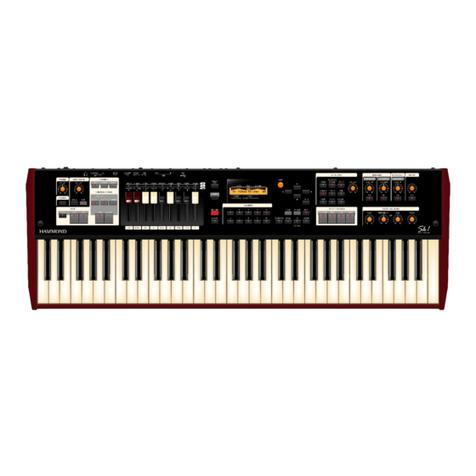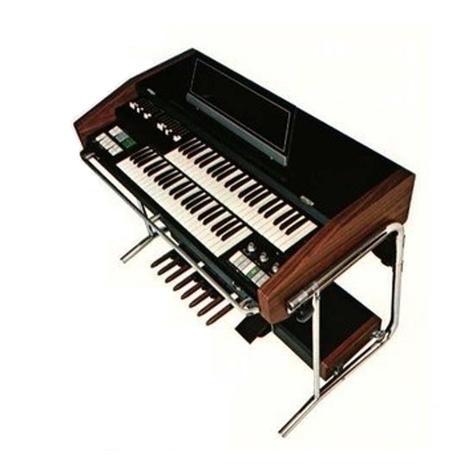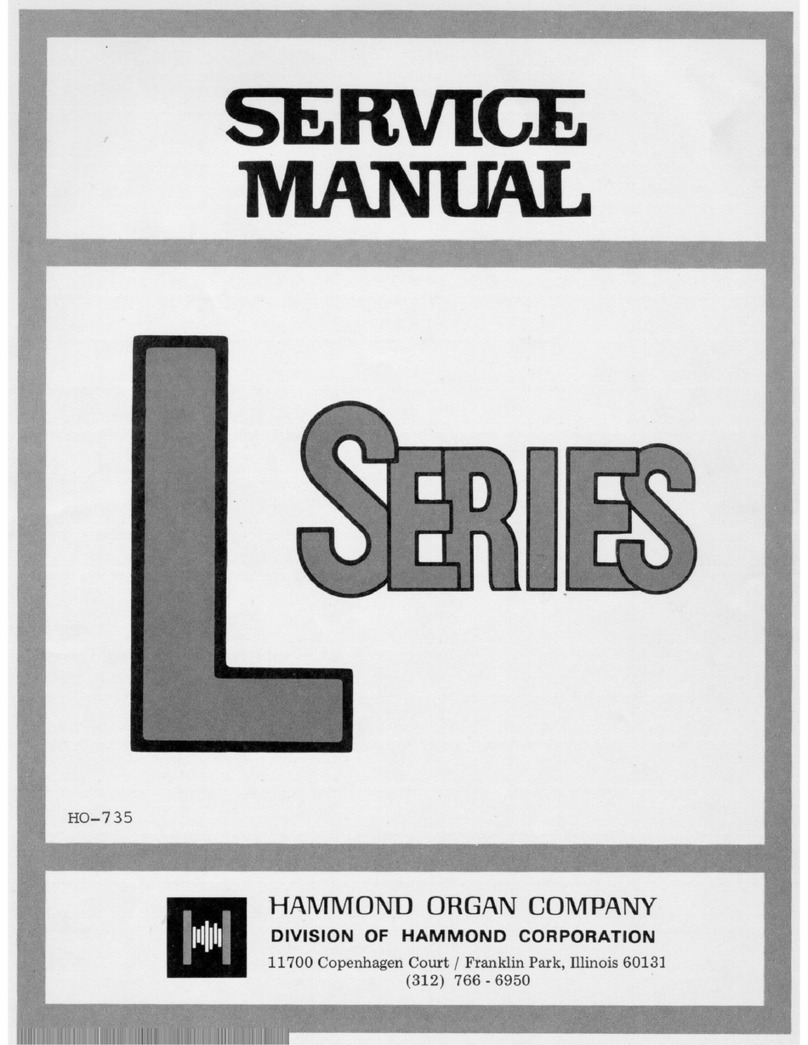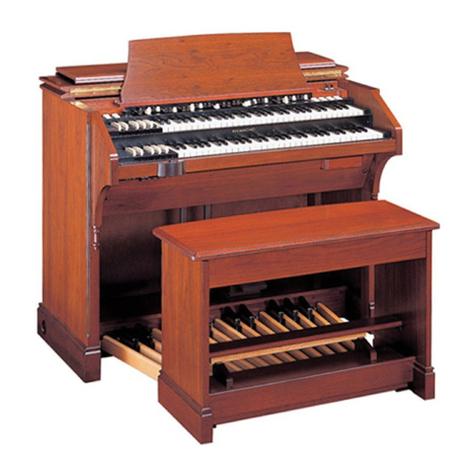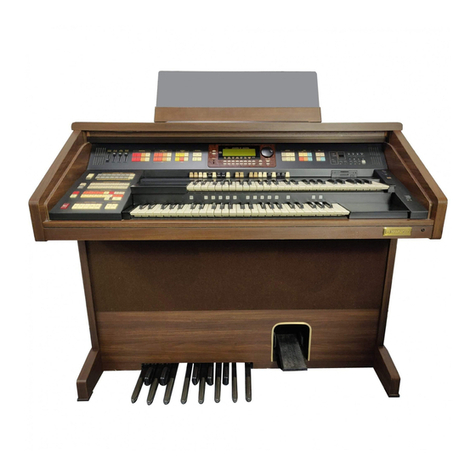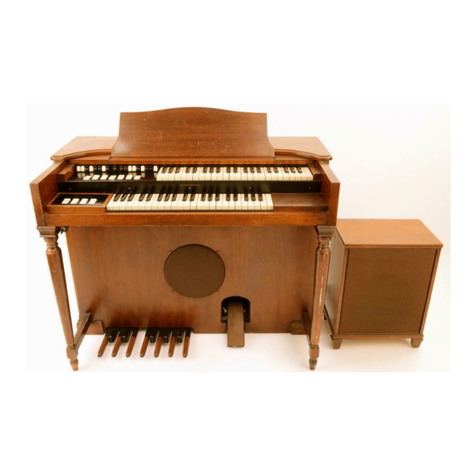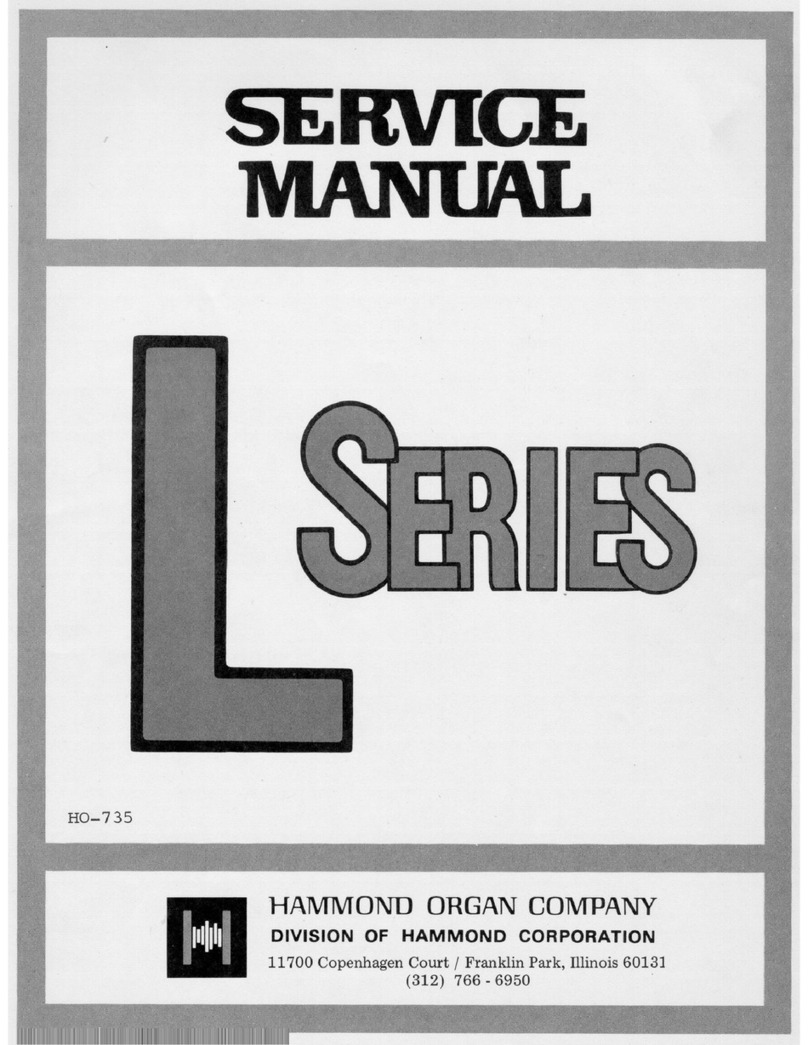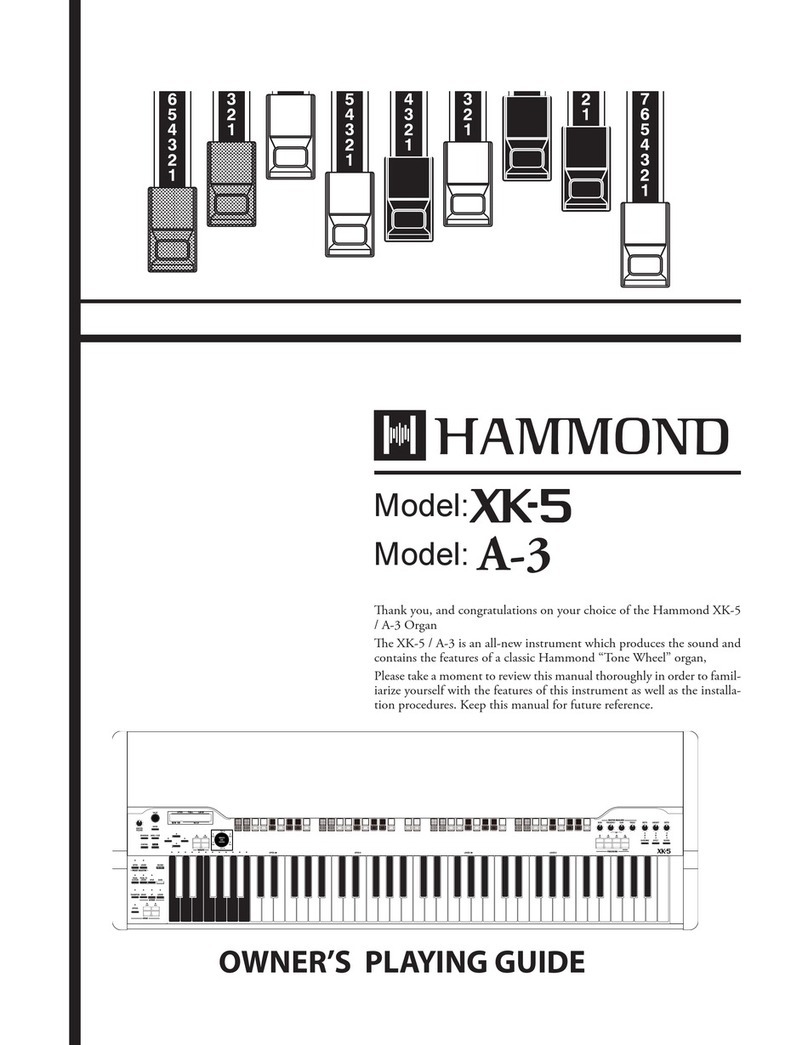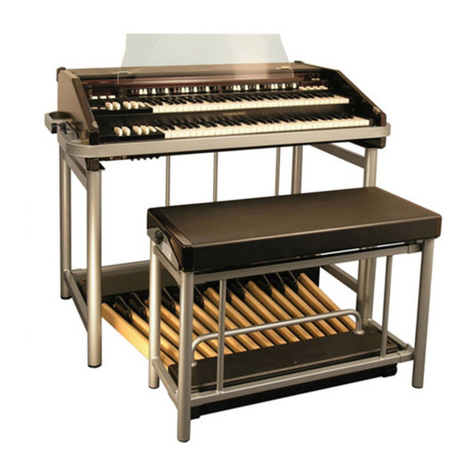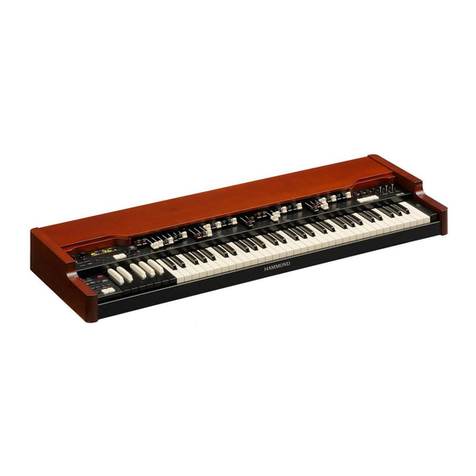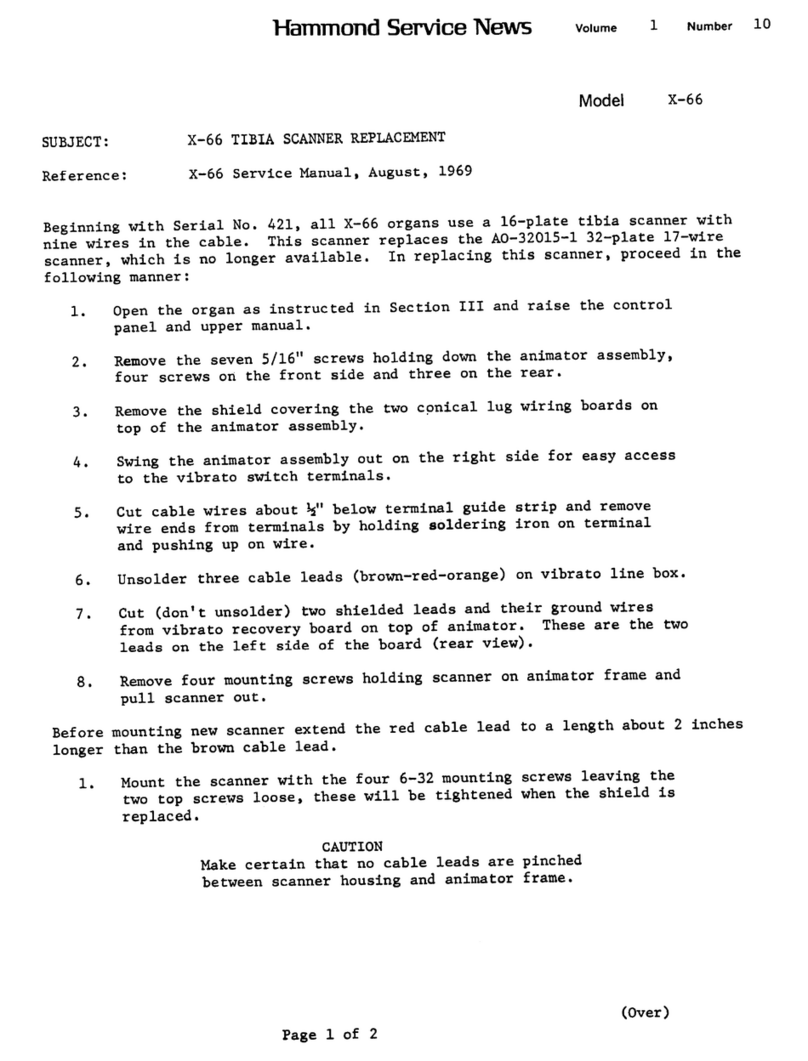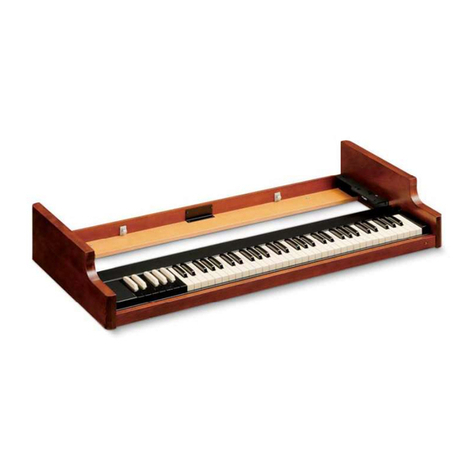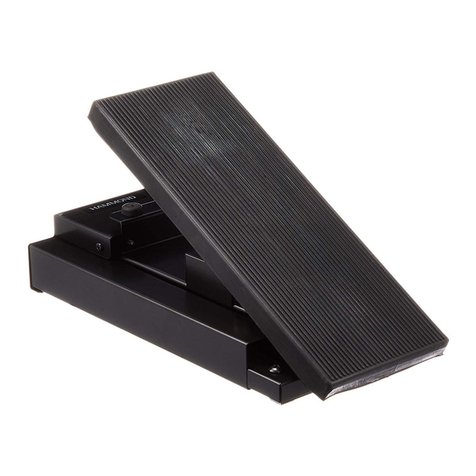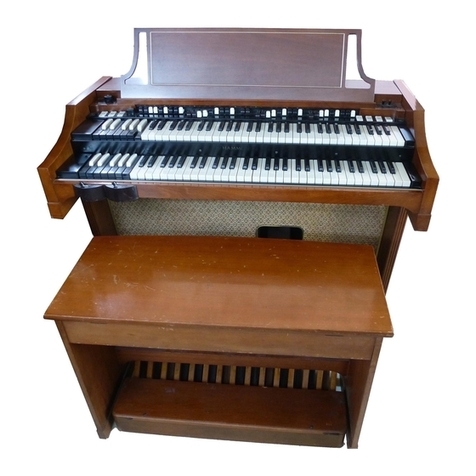L1,is about 32 cycles per second, and the
^highest, number 91,is about 6000 cycles
per second. Frequency numbers 1to 13are
used only for the pedals; numbers 14 to 17
are omitted; and numbers 18 to 91 are used
for the manuals. Figure 1-6 showing filter
locations also shows the termination point
i
»of each frequency, while Figure 5-1 shows
typical tuned and untuned tone generators.
I
^In case any generator frequency is weak or
[absent, refer to ''Practical Service Sugges-
tions" for the procedure to be used in
locating and correcting the trouble.
1-5. MANUALS. -Musical frequencies from the
tone generator go through the manual cable
to terminal strips on the two manuals and
from them to the key contact springs.
Each of the two manuals has 44 playing
keys, or approximately SVi octaves. The two
manuals do not cover exactly the same
pitch range, but they are arranged so that
keys of like pitch are in line. Middle "C" is
the first Con the upper manual and the key
in line with it on the lower manual.
Under each key are anumber of contact
springs (for the fundamental and harmonics
of that key) which contact an equal number
of busbars when the key is pressed. All
contact springs and busbars have precious
metal contact surfaces to avoid corrosion,
and the manuals are sealed to exclude dust
so far as possible. In case acontact becomes
dirty in spite of these precautions, abusbar
shifter is provided in each manual to slide
the busbars endwise and thus provide a
fresh contact surface. (See paragraph 4-3b).
Looking under the lower manual on the
left hand end (front view) ablack wood
end block will be observed. One half inch
from the front of this block is adrilled hole.
Within this drilling is asmall metal tongue
with apunched hole. Using either long nose
phers or ahook, this tongue can be moved
in and out and it in turn moves the busbars.
The upper manual shifter is in asimilar
place and access to it is from the rear of the
console.
The key contacts are connected through
resistance wires to the manual terminal
strips. The manual wiring chart. Figure 1-7,
shows how the contacts of each key are
connected to the proper frequencies to
supply the fundamental and harmonics of
that particular key. The blank spaces
indicate that no key contact is used, inas-
much as the higher harmonics of these
keys are not required. Since the percussion
control circuit is keyed through the 6th
harmonic busbar, the blank spaces in this
row have contacts connected to ground
through resistance wires.
The busbars of each manual, each one
carrying acertain harmonic, are wired to
the appropriate harmonic drawbars for
that manual through the "Drawbars" tab.
NUW&ERS ON FILTER TRANSFORMER*. ARE FRE.QUENCY NU^ABERS
OF TRANSFORMERS
SYNCHRONOUS
MOTOR END
FILTER TRANSFORMERS
42 78 18 S4 ^5 71 II 47 28 61 488 81 21 57 36 74 50 43 79 19 S5 36 72 ,2 48 29 65 569 82 22 58 i3_75 5l_32^ 68 844_25_6I__^
8S 30 £6 690 83 23 59 40 7«, 52 3i 69
o.oolE Qo6nTro o'o'o'o'o'o'o" o~cro~o"oo" <-3 oQ"ol!o oo' obooboo o6o6"o ooooooood||o oo"o^ oooobo.
945 26 62 28fe 3» 67 791 84 24 60 41 77 53 34 70 10 46 27 63387 80 20 56
OUTPUT TERMINAL FREQUENCY NUMBERS"
boboooooeo o-o-c
.37 73 13 49 ^
Figure 1-6. Filter Locations and Frequency Terminations on Generator Cover
1-5
